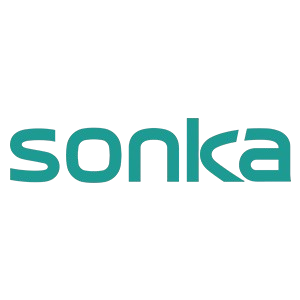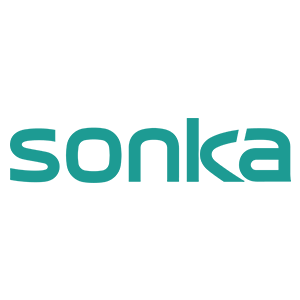Artificial Intelligence (AI) plays a transformative role in telemedicine kiosks by enabling real-time analysis of vital signs, leading to swifter diagnostic decisions. By integrating AI, these kiosks can monitor and analyze data such as heart rate and blood pressure more accurately and rapidly, enhancing the precision of the diagnoses provided. Algorithms powered by AI can adapt and learn from ongoing data, offering an elevated level of care in telemedicine environments. For instance, AI-driven tools have been effectively used to monitor vital signs, significantly improving the monitoring processes for conditions like hypertension. Studies have highlighted that continuous and precise vital sign monitoring can lead to improved patient outcomes, as it allows for timely intervention and prevents the deterioration of chronic conditions.
Body composition analysis is vital in managing chronic diseases, particularly obesity and diabetes, and plays an essential role in preventive health care. Understanding a patient's body composition enables healthcare providers to devise more effective treatment strategies, potentially improving health outcomes and enhancing quality of life. Research supports this, linking body composition with various health outcomes. As technology advances, telemedicine kiosks and handheld devices have been developed to offer precise body composition analysis, thus empowering patients to take proactive measures in managing their health. Such innovations have become indispensable tools in the fight against rising chronic diseases, providing real-time data that helps track progress and make necessary adjustments in individual health plans.
Electronic Health Records (EHR) are pivotal in enabling comprehensive patient data management during remote consultations, ensuring healthcare providers have immediate access to patient histories and information vital for making informed decisions. Statistics indicate a growing trend among healthcare providers to implement EHR systems within telemedicine practices. Seamless EHR connectivity not only minimizes errors but also enhances communication between patients and providers. This integration allows for consistent and continuous care, which is crucial in maintaining patient trust and achieving better health outcomes. By bridging the gap between traditional and digital healthcare interactions, EHR connectivity ensures that remote consultations are efficient, thorough, and more closely mimic in-person consultations.
Telemedicine kiosks are playing a crucial role in expanding healthcare access to rural and underserved populations. These kiosks bridge the gap by providing essential medical services in areas where healthcare facilities are scarce, often reducing the need for travel to distant healthcare centers. According to recent statistics, about 62 million Americans live in healthcare deserts primarily found in rural areas, exacerbating disparities in healthcare access (National Rural Health Association). By installing kiosks in accessible locations such as community centers and pharmacies, these systems provide vital services to those who need them most, fostering a more equitable healthcare landscape.
Telemedicine kiosks offer cost-effective solutions for managing chronic diseases by allowing continuous patient monitoring and minimizing costly hospital visits. Studies show that consistent monitoring of chronic conditions through telemedicine can significantly reduce the frequency of emergency visits and hospital admissions, translating to substantial medical cost savings for both patients and healthcare facilities. Furthermore, virtual consultations via these kiosks diminish the need for patients to travel, effectively cutting down transportation expenses, which is a considerable burden for many individuals managing chronic health issues.
Continuous monitoring facilitated by telemedicine kiosks reduces hospital readmissions by identifying health issues early and allowing for timely interventions. This proactive approach to healthcare ensures that potential complications are addressed before escalating, significantly reducing the likelihood of hospital readmissions. Evidence from various healthcare studies highlights that ongoing monitoring through telemedicine has led to improved patient outcomes, underscoring its effectiveness in preventive healthcare. Patient success stories, such as those involving reduced readmissions due to regular check-ins, attest to the positive impact and transformative potential of these kiosks in managing health proactively.
The Portable Camera Health System Mobile Trolley stands out in healthcare settings due to its user-friendly design and comprehensive features. It integrates advanced AI technology, enabling efficient detection of health issues during video consultations. This mobile trolley is particularly useful in hospitals and emergency response scenarios, where quick access and accurate vital sign monitoring are crucial. By combining mobility with technological prowess, it enhances the delivery of timely medical assessments.
The Body Check Station utilizes multi-parameter analysis technology to enhance health assessments. By providing accurate body composition measurements, it offers insights into elements like fat and muscle distribution. This level of reliability and precision supports various user scenarios, such as engaging patients in understanding their health metrics and initiating proactive management strategies.
This self-service health kiosk allows users to perform primary health diagnostics conveniently. It facilitates common health checks, such as body mass index (BMI) and blood pressure, without the need for direct healthcare professional involvement. Its user-friendly interface and efficient data processing capabilities ensure that users receive quick and accurate health insights.
Hospital-grade kiosks must adhere to strict standards to ensure patient safety and reliability. These models, already endorsed by health authorities, offer dependable measurements of blood pressure and glucose levels. Their successful implementation in hospitals can enhance patient monitoring and care efficiency.
Compact telemedicine stations are designed for seamless integration into various healthcare settings, from hospitals to clinics. Their ability to conduct basic physical examinations aids in providing timely medical responses. These stations are adaptable, catering to diverse patient demographics and usage patterns effectively.
Ensuring data security is paramount in telemedicine applications, including remote monitoring via kiosks. Patient trust can be significantly compromised when data breaches occur, leading to regulatory repercussions and eroded confidence in telehealth solutions. For instance, incidents of healthcare data breaches have shown the detrimental impact on organizations and patient behaviors, highlighting the need for robust security measures. Best practices for secure data handling include encryption protocols, regular security audits, and adherence to regulatory guidelines like HIPAA. Additionally, educating both healthcare providers and patients about digital security can bolster confidence and compliance.
The need for standardized operating procedures across various healthcare systems is critical to facilitate efficient telemedicine use. Variations in protocols can lead to inconsistent service delivery, which compromises patient care. Insights from healthcare administrators indicate challenges such as interoperability issues and varied compliance standards without uniform protocols. Successful protocol implementations, like those in certain hospital networks, have resulted in improved patient outcomes and streamlined processes. These examples show how standardization can elevate care delivery by allowing seamless coordination and integration within telemedicine networks.
Digital literacy poses a significant barrier for elderly patients in adopting telemedicine and utilizing kiosks effectively. Statistics reveal that lower digital literacy rates among older adults can impede access to essential healthcare services. This underscores the importance of training programs and initiatives designed to enhance digital literacy among seniors. Organizations have launched tailored workshops focusing on technology education for the elderly, facilitating better understanding and integration into modern healthcare approaches. By addressing these literacy gaps, telemedicine can become more inclusive, enabling older populations to benefit from the advancements in healthcare technology.
The introduction of 5G technology holds promising potential for enhancing telemedicine, particularly in real-time physical therapy consultations. With its high-speed and low-latency capabilities, 5G can significantly improve the quality of video consultations, enabling therapists to closely monitor patient progress and provide immediate feedback. According to experts, 5G will revolutionize teletherapy by facilitating seamless interaction akin to in-person sessions, increasing accessibility and reducing wait times for therapy services. Furthermore, the teletherapy sector is anticipated to witness substantial growth, leveraged by reliable internet services that allow for broader reach and engagement with patients.
Predictive analytics in telemedicine kiosks can transform preventive healthcare by providing early warnings of potential health issues. These kiosks use sophisticated algorithms to track vital sign trends and forecast potential health problems, allowing for timely interventions. For instance, algorithms that analyze heart rate patterns and blood pressure can predict cardiovascular risks, enabling healthcare providers to mitigate potential issues before they escalate. Successful case studies, such as the integration of predictive modeling in chronic condition monitoring systems, showcase the effectiveness of these advancements in reducing hospital admissions and enhancing patient outcomes.
The emergence of hybrid care models that integrate in-person and virtual consultations represents a significant shift in healthcare delivery. These models offer a versatile approach, improving patient satisfaction and outcomes by combining the best of both worlds. Statistics reveal that patients using hybrid models report higher satisfaction rates due to increased convenience and access to healthcare services. Additionally, these models are transforming the patient experience, allowing for more personalized and flexible care. By bridging the gap between traditional and digital healthcare, hybrid care models ensure continuity of care and enhance overall healthcare delivery systems.


Copyright © 2025 by Shenzhen Sonka Medical Technology Co., Limited - Privacy policy